Adapting to load is what makes us stronger. But because training loads can be manipulated in so many ways—intensity, magnitude, repetition, duration, frequency, direction, speed, acceleration, exercise, equipment, sequence, rest, etc.—some people get paralyzed by the seemingly overwhelming options; frozen by the insecurity of making a wrong choice. Too many do nothing. Others bounce around, always looking for the next best thing. Neither approach is productive, but there is an elegant and deceptively simple solution. Find what works…and do it. Consistently. For the long game. That’s how we honor the continuity of the training process.
Back when I went through my first StrongFirst Certification in 2014, I learned three principles that form the foundation for our training. They were Continuity of the Training Process, Wave the Load, and Specialized Variety. (It has evolved a bit since then—recertify to get your new manual—but the context remains unchanged for the most part.) And while I intuitively understood wave the load and specialized variety, I couldn’t quite grasp the deeper meaning of continuity. But five years later, I appreciate the reason it gets mentioned first, having recognized in my own training practice that it has made the biggest impact.
In regards to my strength training and fitness, two people have shaped me into who I am today. The first person is our CEO and Founder, Pavel Tsatsouline. The second person is Dan John. When I first picked up a copy of their Easy Strength book, several years before my SFG, I instantly fell in love with its simple and sustainable approach to building lasting strength: persistent practice. Though I don’t really remember reading the specific word “continuity,” the message was clear and compelling, and it would become one of my important life lessons, even though it would take me another year or so to actually begin executing.
When Fate Calls: The SFG
Fast forward to the fall of 2014 and the second ever SFG kettlebell instructor certification in the Republic of Korea. I knew I wanted to become certified, but I couldn’t commit. I decided to wait another year. Then Woochae Yoon, Senior Instructor, approached me to be the event’s translator. While he couldn’t offer me a salary—he did give me a new Beast (48kg kettlebell) as a thank you—he promised an invaluable learning opportunity that I could not refuse. But then I realized: fate was testing me—either I show up here, now, and all-in, or live to regret it forever. I did not see myself passing the 5-minute snatch test but still, I signed up as a candidate a few days before the event. I was going to learn from the best.
How did it go? Well, despite failing the snatch and strength tests (back then men had to do five reps of pull-ups or chin-ups) and the increased mental and physical challenges from playing both interpreter and student roles, it was one of the best weekends of my life. And one of the hardest. Imagine practicing drills to the exacting standards then immediately shifting into translator mode for Master Instructor Jon Engum and others while everyone else rested. I barely squeaked by the technique tests. And honestly, I don’t remember much of the graduation practice workout. Hey, don’t get me wrong, I still loved and embraced the “suck”—maybe it’s the former Marine in me.
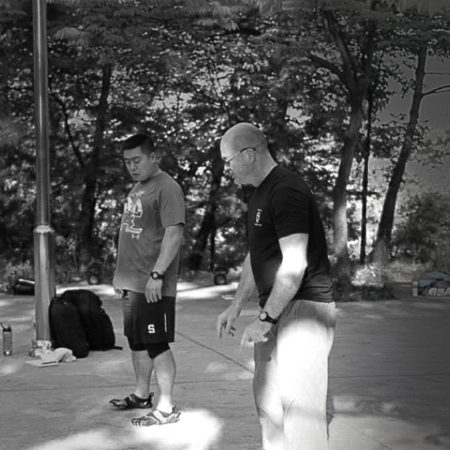
Post SFG 90-day Window of Opportunity: Now What?
Thankfully, having passed my technique tests, I was granted a ninety-day window to submit videos for my snatch and strength tests. But I initially had no idea how to get myself ready for the next ninety days. That’s when I reflected on the SFG programming lecture. Master Instructor Jon Engum stressed having faith in what you have learned and to continuously practice. So I picked up my SFG manual, my notes from Easy Strength and another Dan John book, Intervention, and came up with a plan. When it comes to continuity, Pavel and Dan stress practicing the fundamental movements (push/pull/hinge/squat/loaded carries) every day. So that’s what I did.
My plan (all kettlebell exercises using snatch size or lighter KB unless otherwise stated):
- 3 sets of 5 goblet squats
- 1 get-up per side
- 2 sets of fifteen two-handed swings
- 2-3 sets of 3 reps of one-handed military press
- 2-3 sets of 3 pull-ups
- 1 get-up per side with 32kg (basically a bell heavier than snatch size)
- A total 8-14 sets of ten one-handed swings with the 32kg; or the same volume of 24kg snatches.
I trained this program every day (excluding Sundays) for the next three months. I waved the overall load and volume depending on how I felt that day and continued to pound it out. Around week ten, I felt really strong and decided to test the simple standards from Kettlebell Simple & Sinister. I was shocked by finishing within the allotted time and with relative ease. That’s when it sunk in: continuously improving my program’s fundamentals had gotten me this far and would get me my SFG certification.
So, on day 85, I chose to test myself. On video of course (and just in case). I finished the snatch test with almost ten seconds to spare and grinded out five pull-ups. I’m a certified SFG! Trusting and continuing the process worked!
After a month, reality set in…since you don’t go to school for just a weekend and never come back. You keep on coming back over and over. That meant that I would either need to go on and become an SFG II or recert somehow within the next two years. Back then, my bodyweight required a Beast press for my SFG II half-bodyweight strength test (I’ve since dropped a few pounds and now only need to press the 44kg), which seemed like a totally impossible task. And the 5-minute snatch test…it gave me the shivers just thinking about doing it again. Honestly, if someone had said to me “Joey, the press and snatch test will be the least of your worries in the next 3-4 years,” I would have asked if they’d been hit on the head.
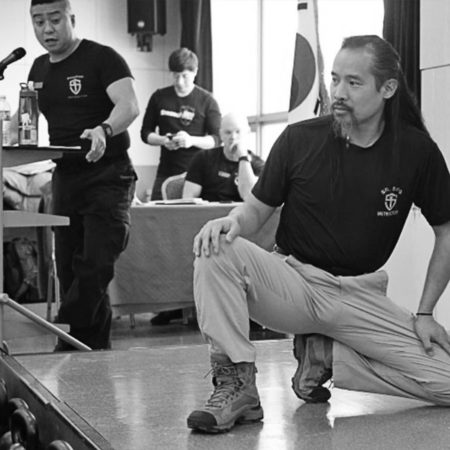
Continuity for a Long Game
Since I knew that maintaining my SFG instructor credentials was important and pursuing SFG II was in my future, I decided to have faith in the exact program that got me my certification. This became the bread and butter of my training. Over time, I added Original Strength Resets, and gradually increased the load (today I goblet squat/getup/press with the 36-44kg for my warm-up) and volume over time. I would do other pressing or barbell programs after the “warm-up,” but this 30-40 minute “warm-up” itself would be a solid session. It’s this simple plan, practiced almost daily, that has made me much stronger over the last four years.
But what about going really hard? Personally, I have no issues with doing a very intense program from time to time to address a particular lift or issue. However, it can only be sustained for so long; always pressing the pedal to the metal is a recipe for getting hurt—the opposite of a sustainable strength practice. But doing the above “warm-up program” on a nearly daily basis will get you stronger over time in a much safe and more sustainable fashion. Just feel free to go up a size when you feel that the current bell you are using feels too easy. As for barbell training, I just picked two lifts to cycle (bench press and deadlift or military press and back squat) with the Power to the People program 2-3 times a week. I also highly recommend the Daily Dose Deadlift program 3-4 times a week for the deadlift if you consider yourself an intermediate deadlifter.
Yes, I have done other relatively intense programs, from my Soju and Tuba or the Fighter Pullup Program, to lifting with Plan StrongTM and practicing Strong EnduranceTM protocols. But continuing to “warm-up” with the fundamental movements is what really set a solid foundation for my success with the higher intensity programs. And on days I didn’t feel like lifting, this “warm-up” would always be a solid session.
The Proof is in the Results
And what happened in the five years that followed my SFG I? I recertified my SFG I a total of four times, my SFG II and SFL twice. Yes, the imaginary person I accused of being hit on the head was actually right! The last time I recertified was on February 21st, 2019, through the new unified recertification (recertifying all designations at one event). That day I pressed the 44kg without even hissing, broke the 4-minute barrier on the snatch test, and pulled a double bodyweight deadlift off the floor very explosively without even grinding. Progress indeed!
How was this possible? I continued the training process. Day in, day out, on an average of four times a week consistently for nearly five years. And the day I went through the unified recertification, the true context of the Continuity of the Training Process finally clicked. Oh, and just for the record, I pressed the Beast three times on each side, pulled 2.3 times my bodyweight on the deadlift, and benched 265 pounds (25 pounds more than SFL test weight) with ease very recently.
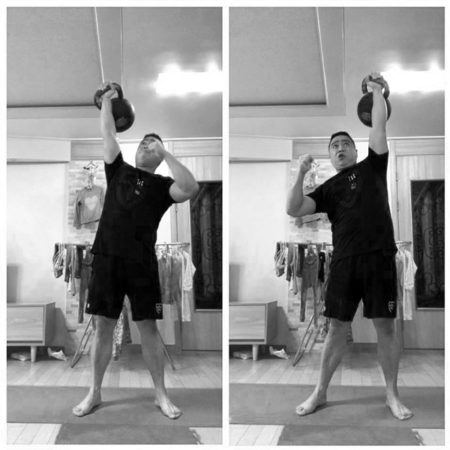
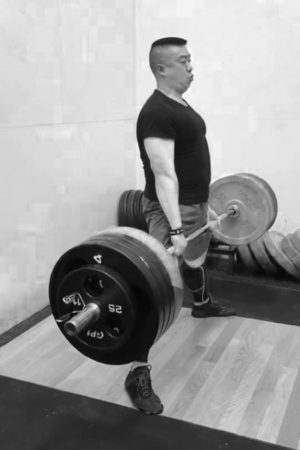
So in a Nutshell, What is Continuity?
- Continuity means to show up.
- Continuity means to never give up.
- Continuity means consistency will ALWAYS trump intensity (quoting Master Instructor Mark Reifkind).
- Continuity means little and often over the long haul (quoting legendary track coach Ralph Maughan).
- Continuity is training consistently for progress while increasing volume and load.
To my brothers and sisters in strength as well as those who have yet to officially join our community, I hope this article on Continuity helps to add more context to the first ethos of our Code, “I am a Student of Strength.” Trust in what you have learned, continue to practice it on a regular basis, and good things will happen eventually. I would like to take this opportunity to give a shout out to StrongFirst Certified Senior Instructor Woochae Yoon for finally giving me a cause to show up, and to my mentors, Master Instructor Jon Engum and Senior Instructor Dr. Mark Cheng, for their guidance.


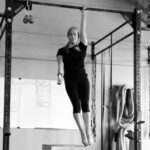
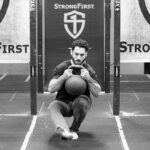
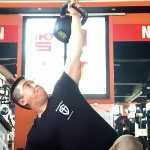


Excellent article, Joey.
Your story is very illuminating and inspiring. I can relate to chasing many programmes and intensities, as well as experiencing the benefits of consistency.
Thank you very much for sharing!
All the best
Kat
Thank you Kat.
Joey,
Really a great article. Many can learn from your consistency, rather than chasing every new program that comes along. Thank you for your own military service and support of US Troops.
Thank you Nate.
Great article Joey. Well done
Thank you Peter.
A very important lesson I’m going to take to heart and act on starting today.
Thank you. I’m honored.
Inspiring!
Thank you. I hope it will help you as much as it helped me get to where I am today.
I recognize that this is more of an intuitive program, but in what range did you change the load and volume?
“I waved the overall load and volume depending on how I felt that day and continued to pound it out. ”
I am mainly wondering how much progress you can make from just high frequency rather than much progressive overload, for those who are not beginners obviously.
For load on grinds (goblet squats and presses), I just went up a size at the point that the bell I was working with started to feel too easy. For volume (ballistics at the end), it would be anywhere between a total of 80-140 swings or snatches. That would depend on how much time I had, how I felt, etc. And if the load felt light on that day, I would go up a size and vice versa if a certain load felt too heavy and straining.
Fantastic article, Joey! So much good stuff in there. I´ll definitely re-read it a few more times.
Thank you, Sven. I really enjoyed your recent article myself. Look for it to be out in Korean in the next week.
Great article. It looks like a variation of S&S with less focus on TGU and more lifts in a easy strength manner. Question: why did you do the power exercise at the end?
I always preferred doing them towards the end (I know it goes against S&S) personally because from my days of playing football I think. Those so called “finishers” towards the end of practice where the coach would have you sprint. I know it goes against everything I’ve learned, but old habits are hard to give up. Honestly though I don’t really think it matters when you do the heavy swings/snatches as long as you know you can do the rest of the exercises afterwards.
Looking at ROP, nothing bad in doing the ballistics last. As long as the lifts are not done to the limit, which seems to be the case if you consider it as a warm-up / skill practice program.
Thanks, this is really helpful.
I think it makes sense in the context of this program. The first exercises are very low volume and probably dont affect the ballistics much.
Looks like a great program, and an interesting alternative to simple and sinister to progress presses and snatches along with swings.
How did you decide whether to do swings or snatches? Or did you do snatches 1/2 times a week?
Oscar,
To be honest with you, I didn’t think too much and just went with what I felt would benefit me more for the day.